-
 Bitcoin
Bitcoin $106,782.3966
-0.72% -
 Ethereum
Ethereum $2,406.7764
-1.16% -
 Tether USDt
Tether USDt $1.0005
0.02% -
 XRP
XRP $2.0918
-1.53% -
 BNB
BNB $644.5785
-0.17% -
 Solana
Solana $141.0925
-0.69% -
 USDC
USDC $1.0000
0.02% -
 TRON
TRON $0.2721
0.18% -
 Dogecoin
Dogecoin $0.1585
-1.26% -
 Cardano
Cardano $0.5497
-1.14% -
 Hyperliquid
Hyperliquid $35.8493
-1.58% -
 Bitcoin Cash
Bitcoin Cash $502.3089
2.20% -
 Sui
Sui $2.7092
3.87% -
 Chainlink
Chainlink $12.8551
-1.85% -
 UNUS SED LEO
UNUS SED LEO $9.0548
0.53% -
 Stellar
Stellar $0.2344
-0.85% -
 Avalanche
Avalanche $17.2676
-0.23% -
 Toncoin
Toncoin $2.8282
0.56% -
 Shiba Inu
Shiba Inu $0.0...01113
-1.14% -
 Litecoin
Litecoin $83.9593
-0.93% -
 Hedera
Hedera $0.1447
0.82% -
 Monero
Monero $306.9022
-2.07% -
 Bitget Token
Bitget Token $4.6358
3.42% -
 Dai
Dai $0.9999
0.01% -
 Ethena USDe
Ethena USDe $1.0001
0.02% -
 Polkadot
Polkadot $3.3211
0.06% -
 Uniswap
Uniswap $6.8775
0.75% -
 Pi
Pi $0.5664
-0.27% -
 Aave
Aave $256.0055
1.28% -
 Pepe
Pepe $0.0...09013
-3.24%
How to trade spot on Kraken? What is the difference between placing orders and taking orders?
To trade spot on Kraken, sign up, verify your identity, deposit funds, and navigate to the spot trading section to buy or sell cryptocurrencies at current market prices.
May 14, 2025 at 08:50 am
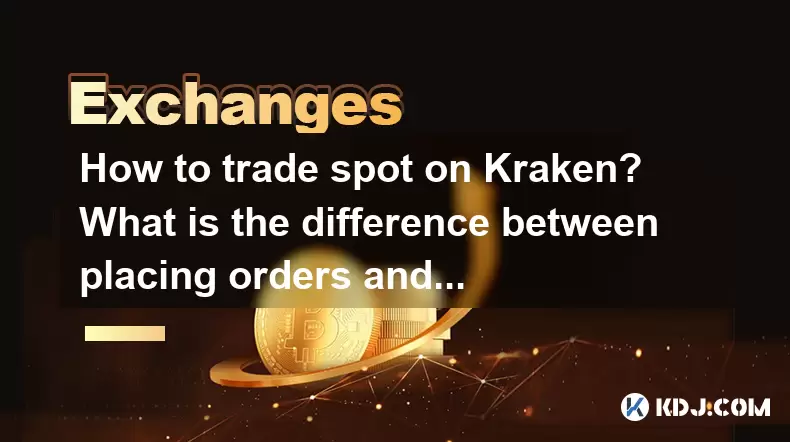
Trading spot on Kraken involves buying and selling cryptocurrencies at the current market price. This type of trading is straightforward and suitable for beginners and experienced traders alike. In this article, we will explore how to trade spot on Kraken, and delve into the differences between placing orders and taking orders.
Getting Started with Spot Trading on Kraken
To begin trading spot on Kraken, you need to follow a few initial steps to set up your account and familiarize yourself with the platform. Here's how you can get started:
- Sign up for a Kraken account: Visit the Kraken website and click on the "Create Account" button. Fill in your personal details, including your email address and a strong password.
- Verify your identity: Kraken requires users to complete a verification process to comply with regulatory standards. You'll need to provide personal identification documents such as a passport or driver's license.
- Deposit funds: After verification, you can deposit funds into your Kraken account. You can choose to deposit via bank transfer, credit/debit card, or cryptocurrency transfer.
- Navigate to the spot trading section: Once your account is funded, go to the "Trade" section on the Kraken platform and select "Spot Trading."
Understanding the Spot Trading Interface
The Kraken spot trading interface is designed to be user-friendly, but it can be overwhelming for new users. Here's a breakdown of the key components you'll see:
- Order Book: This displays the current buy and sell orders for a specific cryptocurrency. The order book shows the depth of the market, with the highest bid price at the top and the lowest ask price at the bottom.
- Price Chart: The price chart shows the historical price movement of the cryptocurrency you are trading. You can customize the chart to view different time frames and add technical indicators.
- Trading Pair: This is the pair of cryptocurrencies you are trading, such as BTC/USD or ETH/BTC.
- Order Entry Panel: This is where you will enter your trading orders, specifying the type of order, the amount, and the price.
Placing Orders on Kraken
Placing an order on Kraken involves setting the parameters for your trade. There are several types of orders you can place:
- Market Order: This type of order is executed immediately at the current market price. It's the simplest way to buy or sell a cryptocurrency quickly.
- Limit Order: A limit order allows you to set a specific price at which you want to buy or sell a cryptocurrency. The order will only be executed if the market reaches your specified price.
- Stop Order: A stop order is used to limit losses or protect profits. It becomes a market order once the stop price is reached.
To place an order on Kraken, follow these steps:
- Select the trading pair: Choose the cryptocurrency pair you want to trade from the dropdown menu.
- Choose the order type: Decide whether you want to place a market, limit, or stop order.
- Enter the order details: Specify the amount of cryptocurrency you want to buy or sell and, if applicable, the price.
- Review and submit the order: Double-check your order details and click the "Submit Order" button.
Taking Orders on Kraken
Taking an order, also known as filling an order, involves executing a trade that matches an existing order in the order book. When you take an order, you are essentially accepting the terms of an order placed by another trader. Here's how it works:
- Market Order: If you place a market order, you are taking the best available price from the order book. For a buy order, you'll take the lowest ask price, and for a sell order, you'll take the highest bid price.
- Limit Order: If you place a limit order at a price that matches an existing order in the order book, your order will be filled immediately. For example, if you place a buy order at a price that matches an existing sell order, your order will be taken by the seller.
Differences Between Placing and Taking Orders
Understanding the difference between placing and taking orders is crucial for effective trading on Kraken. Here's a detailed comparison:
- Control Over Price: When you place an order, you have control over the price at which you want to buy or sell. If you place a limit order, your order will only be executed at your specified price. On the other hand, when you take an order with a market order, you have no control over the price and will get the best available price at that moment.
- Execution Speed: Placing a limit order can result in delayed execution, as your order will only be filled if the market reaches your specified price. Taking an order with a market order ensures immediate execution, as you are accepting the best available price from the order book.
- Impact on Market: Placing a large order can impact the market, especially if it's a limit order that adds significant depth to the order book. Taking an order with a market order does not directly impact the market, as you are simply filling an existing order.
- Risk Management: Placing orders, particularly stop orders, can be an effective way to manage risk. By setting a stop price, you can limit potential losses or protect profits. Taking orders with market orders does not offer the same level of risk management, as you are executing at the current market price.
Practical Example of Placing and Taking Orders
To illustrate the difference between placing and taking orders, let's consider a practical example. Suppose you want to buy Bitcoin (BTC) with US dollars (USD) on Kraken.
- Placing a Limit Order: You decide to place a limit order to buy 1 BTC at a price of $30,000. You enter the order details and submit the order. Your order will be added to the order book and will only be executed if the market price reaches $30,000 or lower.
- Taking an Order with a Market Order: Instead of placing a limit order, you decide to buy 1 BTC immediately with a market order. You enter the order details and submit the order. Your order will be filled at the best available price from the order book, which might be $30,100. You have no control over the price, but your order is executed instantly.
Managing Your Spot Trading on Kraken
Once you've placed or taken orders, it's important to manage your trades effectively. Here are some tips for managing your spot trading on Kraken:
- Monitor Your Orders: Keep an eye on your open orders to see if they are being filled. You can cancel or modify your orders if necessary.
- Use Stop Loss and Take Profit Orders: To manage risk, consider using stop loss and take profit orders. A stop loss order will automatically sell your cryptocurrency if the price drops to a certain level, limiting your losses. A take profit order will sell your cryptocurrency if the price reaches a certain level, locking in your profits.
- Review Your Trading History: Regularly review your trading history to analyze your performance and identify areas for improvement. Kraken provides detailed reports of your trades, which can help you make more informed decisions in the future.
Frequently Asked Questions
Q: Can I trade spot on Kraken with leverage?
A: No, spot trading on Kraken does not involve leverage. Spot trading means you are buying or selling the actual cryptocurrency, without borrowing funds from the exchange. If you want to trade with leverage, you would need to use Kraken's margin trading feature, which is separate from spot trading.
Q: What fees are associated with spot trading on Kraken?
A: Kraken charges different fees depending on the trading pair and the volume of your trades. For most trading pairs, the maker fee (for placing an order) is 0.16% and the taker fee (for taking an order) is 0.26%. However, these fees can be lower if you trade high volumes or use Kraken's Pro plan.
Q: How can I withdraw my funds from Kraken after spot trading?
A: To withdraw your funds from Kraken after spot trading, follow these steps:
- Go to the "Funding" section on the Kraken platform.
- Select the cryptocurrency or fiat currency you want to withdraw.
- Enter the amount you want to withdraw and the destination address or bank account.
- Review the withdrawal details and submit the request. Kraken will process your withdrawal, and the funds will be sent to your specified address or account.
Q: Is it possible to automate spot trading on Kraken?
A: Kraken does not offer built-in automation features for spot trading. However, you can use third-party trading bots that support Kraken's API to automate your spot trading. These bots can place and take orders based on predefined rules and strategies, but you should be cautious and thoroughly research any bot before using it.
Disclaimer:info@kdj.com
The information provided is not trading advice. kdj.com does not assume any responsibility for any investments made based on the information provided in this article. Cryptocurrencies are highly volatile and it is highly recommended that you invest with caution after thorough research!
If you believe that the content used on this website infringes your copyright, please contact us immediately (info@kdj.com) and we will delete it promptly.
- Sonic, Magic Gathering, and July 2025: What's Trending?
- 2025-06-28 02:30:12
- Bitcoin Whale Inflows Nosedive: Are Investors Eyeing a New All-Time High?
- 2025-06-28 02:30:12
- Smart Investors Eye Audited Token RUVI for Rally Prediction
- 2025-06-28 02:35:12
- Neo Pepe, XRP & Cardano: A Memecoin Summer Showdown?
- 2025-06-28 02:55:12
- Qubetics, Cosmos, Cardano: Decoding Today's Crypto Buzz
- 2025-06-28 02:55:12
- Snap Inc.'s AR Momentum: Stock Surge Fueled by Teen Engagement
- 2025-06-28 02:57:07
Related knowledge
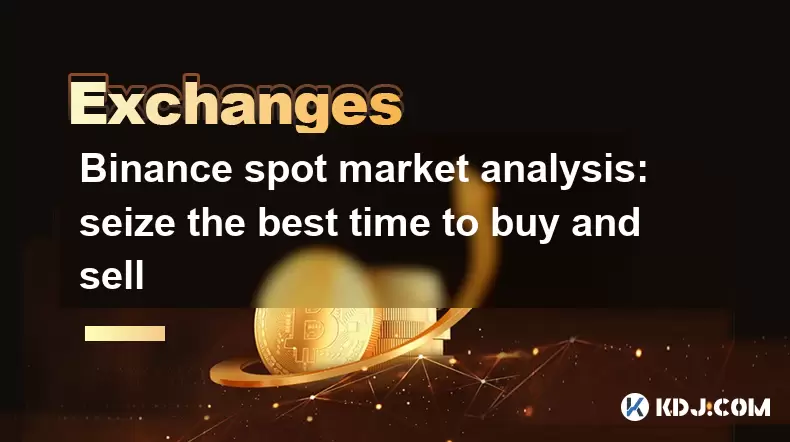
Binance spot market analysis: seize the best time to buy and sell
Jun 19,2025 at 04:56pm
Understanding the Binance Spot MarketThe Binance spot market is one of the most popular platforms for cryptocurrency trading globally. It allows users to trade digital assets at current market prices, making it essential for traders aiming to buy low and sell high. Unlike futures or margin trading, spot trading involves direct ownership of the asset aft...
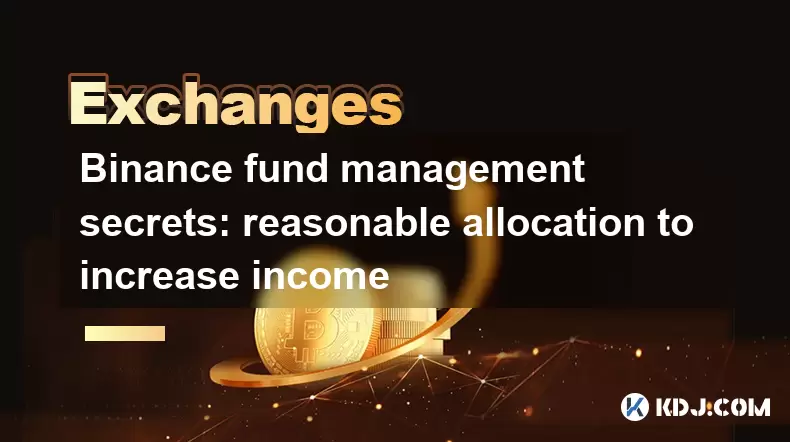
Binance fund management secrets: reasonable allocation to increase income
Jun 22,2025 at 02:29pm
Understanding Binance Fund ManagementBinance fund management involves strategic allocation of your cryptocurrency assets to optimize returns while managing risk. The key to successful fund management lies in understanding how different investment options on the Binance platform can be utilized to create a diversified portfolio. This includes spot tradin...
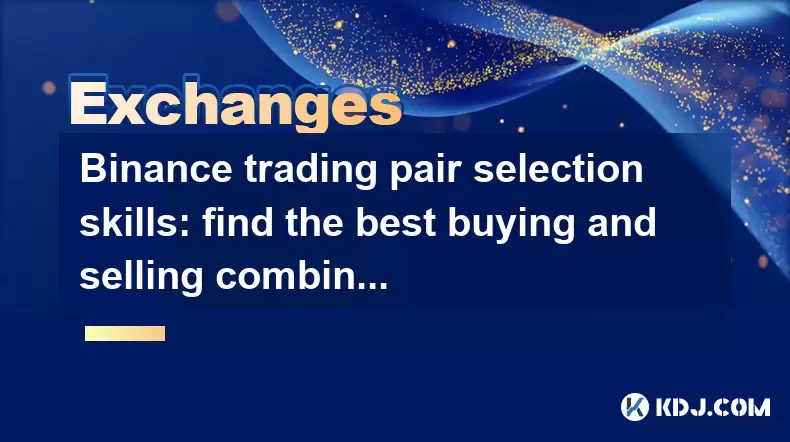
Binance trading pair selection skills: find the best buying and selling combination
Jun 23,2025 at 02:49am
Understanding the Basics of Trading Pairs on BinanceBefore diving into trading pair selection skills, it's essential to understand what a trading pair is. On Binance, a trading pair refers to two cryptocurrencies that can be traded against each other. For example, BTC/USDT means Bitcoin is being traded against Tether. Each trading pair has its own liqui...
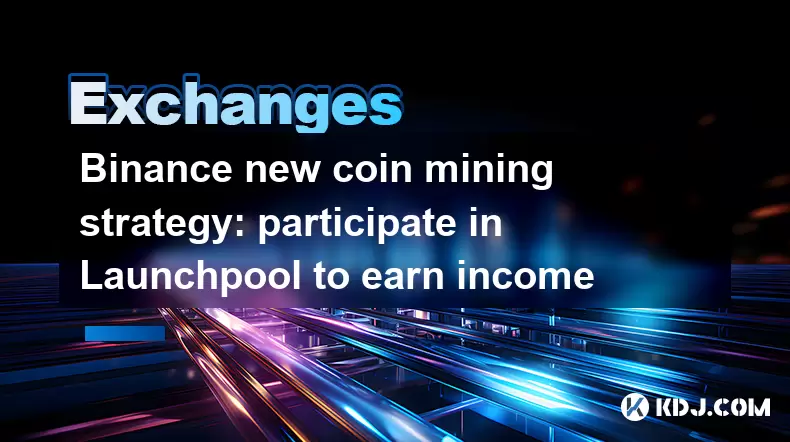
Binance new coin mining strategy: participate in Launchpool to earn income
Jun 23,2025 at 11:56am
What is Binance Launchpool and how does it work?Binance Launchpool is a feature introduced by the world’s largest cryptocurrency exchange, Binance, to allow users to earn new tokens through staking. This platform enables users to stake their existing cryptocurrencies (such as BNB, BUSD, or other supported assets) in exchange for newly launched tokens. T...
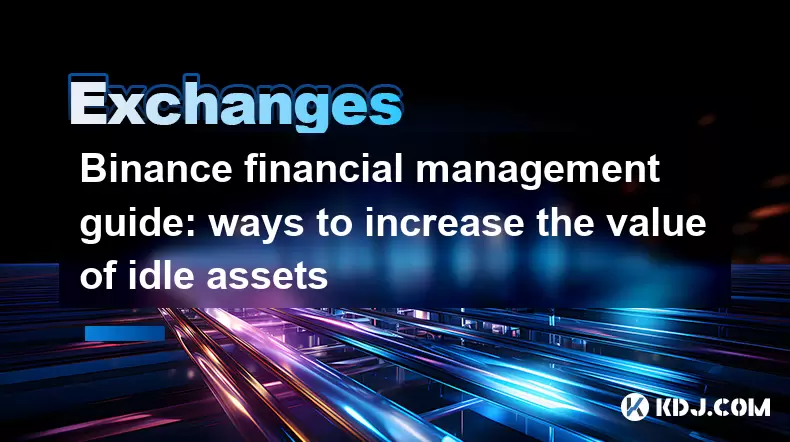
Binance financial management guide: ways to increase the value of idle assets
Jun 19,2025 at 11:22pm
Understanding Idle Assets in the Cryptocurrency SpaceIn the fast-paced world of cryptocurrency, idle assets refer to digital currencies that are not actively being used for trading, staking, or yield farming. Holding these funds in a wallet without utilizing them means missing out on potential growth opportunities. Binance, as one of the leading platfor...
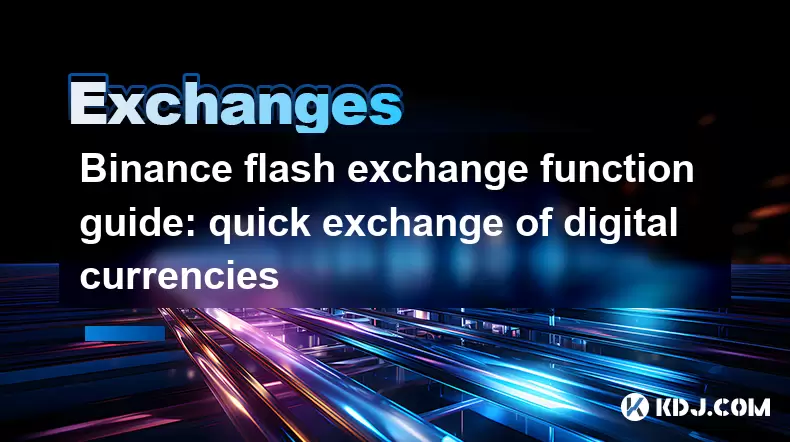
Binance flash exchange function guide: quick exchange of digital currencies
Jun 23,2025 at 12:29pm
What is the Binance Flash Exchange Function?The Binance Flash Exchange function is a powerful tool designed to allow users to instantly swap between supported cryptocurrencies without the need for placing traditional buy/sell orders. This feature simplifies the trading process by offering a direct exchange mechanism, eliminating the requirement to conve...

Binance spot market analysis: seize the best time to buy and sell
Jun 19,2025 at 04:56pm
Understanding the Binance Spot MarketThe Binance spot market is one of the most popular platforms for cryptocurrency trading globally. It allows users to trade digital assets at current market prices, making it essential for traders aiming to buy low and sell high. Unlike futures or margin trading, spot trading involves direct ownership of the asset aft...

Binance fund management secrets: reasonable allocation to increase income
Jun 22,2025 at 02:29pm
Understanding Binance Fund ManagementBinance fund management involves strategic allocation of your cryptocurrency assets to optimize returns while managing risk. The key to successful fund management lies in understanding how different investment options on the Binance platform can be utilized to create a diversified portfolio. This includes spot tradin...

Binance trading pair selection skills: find the best buying and selling combination
Jun 23,2025 at 02:49am
Understanding the Basics of Trading Pairs on BinanceBefore diving into trading pair selection skills, it's essential to understand what a trading pair is. On Binance, a trading pair refers to two cryptocurrencies that can be traded against each other. For example, BTC/USDT means Bitcoin is being traded against Tether. Each trading pair has its own liqui...

Binance new coin mining strategy: participate in Launchpool to earn income
Jun 23,2025 at 11:56am
What is Binance Launchpool and how does it work?Binance Launchpool is a feature introduced by the world’s largest cryptocurrency exchange, Binance, to allow users to earn new tokens through staking. This platform enables users to stake their existing cryptocurrencies (such as BNB, BUSD, or other supported assets) in exchange for newly launched tokens. T...

Binance financial management guide: ways to increase the value of idle assets
Jun 19,2025 at 11:22pm
Understanding Idle Assets in the Cryptocurrency SpaceIn the fast-paced world of cryptocurrency, idle assets refer to digital currencies that are not actively being used for trading, staking, or yield farming. Holding these funds in a wallet without utilizing them means missing out on potential growth opportunities. Binance, as one of the leading platfor...

Binance flash exchange function guide: quick exchange of digital currencies
Jun 23,2025 at 12:29pm
What is the Binance Flash Exchange Function?The Binance Flash Exchange function is a powerful tool designed to allow users to instantly swap between supported cryptocurrencies without the need for placing traditional buy/sell orders. This feature simplifies the trading process by offering a direct exchange mechanism, eliminating the requirement to conve...
See all articles























































































